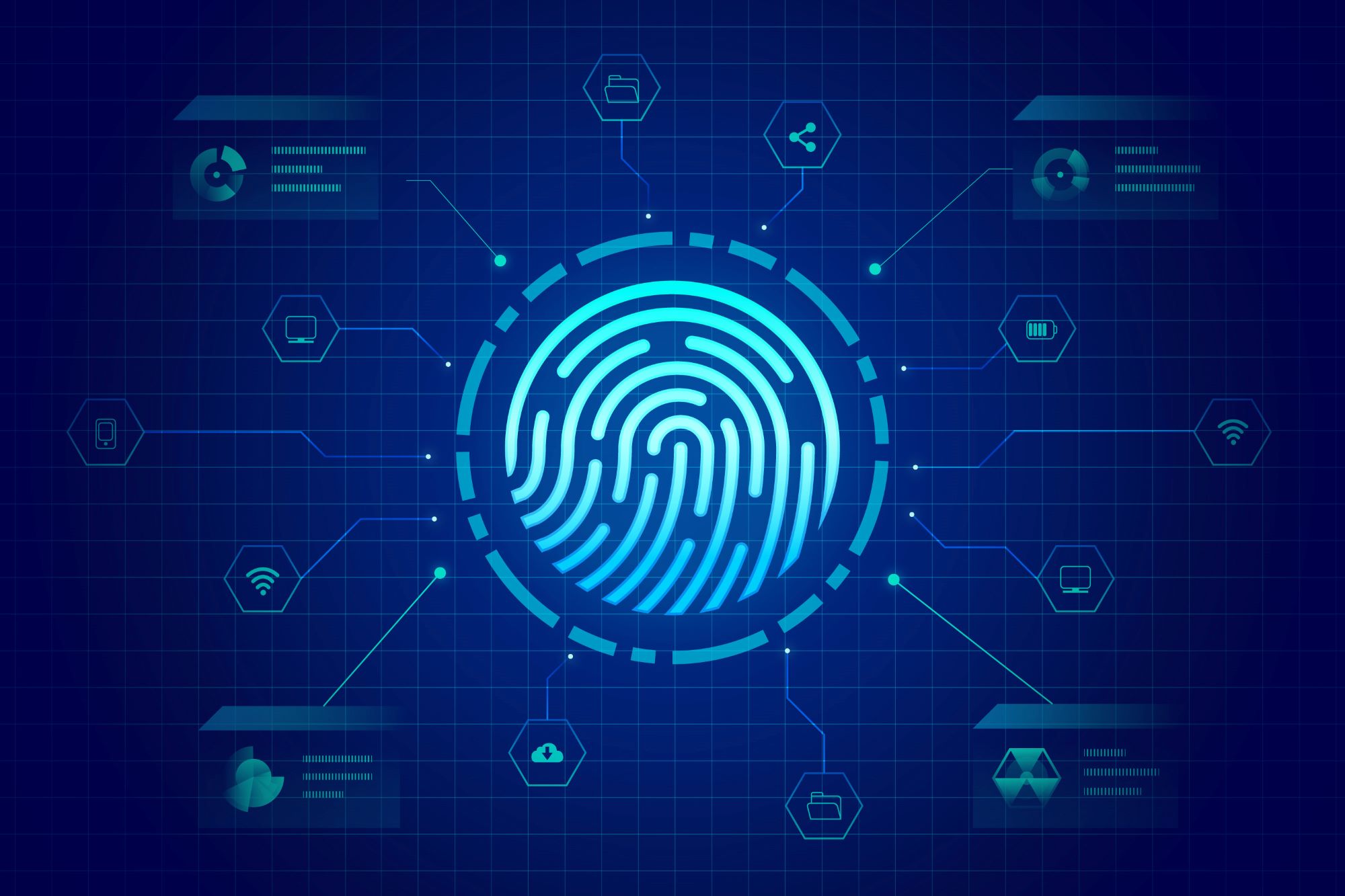
The Role of Digital Identity in the Future of Online Security
In an increasingly interconnected world, the concept of digital identity has become pivotal to online security. As our personal, financial, and professional lives move into digital spaces, ensuring secure and verifiable identities is crucial to preventing fraud, protecting privacy, and maintaining trust in online transactions. This article explores the evolving role of digital identity in the future of online security, examining its importance, challenges, and the technologies that are shaping its development.
Introduction to Digital Identity
What is Digital Identity?
Digital identity refers to the unique set of identifiers and attributes that represent an individual or entity in the digital space. These identifiers can include usernames, passwords, social security numbers, biometric data, and even behavioral patterns. Unlike physical identity, which is rooted in tangible elements like government-issued IDs, digital identity exists within the virtual realm and is essential for accessing online services, making transactions, and establishing online presence.
The Evolution of Digital Identity
The concept of digital identity has evolved significantly over the past few decades. Initially, digital identity was limited to simple username-password combinations. However, as online threats became more sophisticated, the need for stronger, more secure identity verification methods emerged. Today, digital identity encompasses a wide range of technologies, including multi-factor authentication (MFA), biometric verification, and decentralized identity systems.
Importance of Digital Identity in Online Security
Protecting Personal Information
Digital identity plays a critical role in safeguarding personal information. With the rise of cyber threats such as:
- Identity Theft: Unauthorized access and use of personal data for fraudulent activities.
- Phishing: Deceptive attempts to acquire sensitive information by masquerading as a trustworthy entity.
- Data Breaches: Unauthorized access to confidential data, leading to potential misuse or exposure.
Ensuring that an individual’s digital identity is secure is paramount. A robust digital identity framework helps in:
- Authenticating Users: Verifying that individuals are who they claim to be.
- Restricting Access: Ensuring that only authorized individuals can access sensitive information.
Enabling Secure Transactions
In the digital economy, secure transactions are vital for maintaining trust between businesses and consumers. Digital identity verification processes help in:
- Preventing Fraud: Ensuring that the individuals making online transactions are authentic.
- Protecting Consumers: Safeguarding individuals from financial loss due to fraudulent activities.
- Avoiding Financial Losses: Helping businesses avoid revenue losses associated with fraud.
Facilitating Access to Services
A secure digital identity system ensures that individuals can seamlessly access various online services. This includes:
- Banking: Secure access to personal financial accounts and transactions.
- Healthcare: Protecting patient information and ensuring confidentiality.
- Online Services: Providing a reliable method for accessing an increasing range of digital services.
As more services move online, having a reliable digital identity verification system becomes essential for maintaining both security and convenience.
Challenges in Digital Identity
Privacy Concerns
One of the major challenges associated with digital identity is the potential for privacy invasion. With more personal data being stored and used for identity verification, there is a risk that this information could be misused or accessed by unauthorized parties. Balancing the need for security with the protection of individual privacy is a significant challenge in the digital identity space.
Identity Theft and Fraud
Despite advances in digital identity technologies, identity theft and fraud remain prevalent. Cybercriminals are continually developing new methods to steal personal information and use it for malicious purposes. Ensuring that digital identity systems are resilient against such threats is an ongoing challenge.
Interoperability Issues
The lack of standardization and interoperability between different digital identity systems can create challenges for users and organizations. Without a unified approach, individuals may find it difficult to manage multiple digital identities across various platforms, leading to potential security vulnerabilities.
Technologies Shaping the Future of Digital Identity
Blockchain and Decentralized Identity
Blockchain technology is poised to revolutionize digital identity by enabling decentralized identity systems. Unlike traditional systems that rely on centralized authorities, decentralized identity allows individuals to control their own identity information. This reduces the risk of data breaches and gives users greater control over their personal information.
Biometric Authentication
Biometric authentication, which includes fingerprint scanning, facial recognition, and iris scanning, is becoming increasingly popular as a secure method of verifying digital identity. Biometrics offer a higher level of security compared to traditional methods because they are unique to each individual and difficult to replicate.
Artificial Intelligence and Machine Learning
Artificial intelligence (AI) and machine learning are revolutionizing digital identity systems by:
- Enhancing Authentication Methods: Using AI algorithms to analyze biometric data, such as facial recognition or voice patterns, to improve accuracy and security.
- Detecting Fraudulent Activity: Employing machine learning models to identify unusual patterns in user behavior that may indicate fraud.
- Analyzing Behavior Patterns: Monitoring and analyzing user behavior to establish baselines and detect deviations that could suggest unauthorized access.
- Strengthening Online Security: Integrating AI-driven insights to continuously improve security measures and adapt to emerging threats.
- Automating Identity Verification: Streamlining the process of verifying identities through advanced AI techniques, reducing manual effort and increasing efficiency.
Multi-Factor Authentication (MFA)
Multi-factor authentication (MFA) is a critical security measure that involves:
- Multiple Verification Factors: Requiring users to provide two or more distinct types of verification to access a service. Common factors include:
- Something You Know: A password or PIN.
- Something You Have: A physical device like a smartphone or security token.
- Something You Are: Biometric data such as fingerprints or facial recognition.
- Reducing Unauthorized Access: Significantly lowering the risk of unauthorized access by adding layers of security.
- Improving Security: Enhancing overall security by combining various types of authentication, making it more difficult for unauthorized users to gain access.
- User Examples: A user might enter a password (something they know) and then provide a fingerprint scan (something they have) to complete the authentication process.
Zero Trust Architecture
Zero Trust is a security framework that assumes no user or device, whether inside or outside the network, should be trusted by default. This model requires continuous verification of identity, even after initial access has been granted. Zero Trust architecture is increasingly being integrated with digital identity systems to provide a more secure online environment.
The Role of Governments in Digital Identity
Government-Issued Digital IDs
Many governments are exploring the issuance of digital IDs as a way to provide citizens with a secure and verifiable identity for online transactions. These digital IDs can be used for a variety of purposes, including accessing government services, making financial transactions, and verifying identity in online interactions.
Regulations and Standards
Governments play a crucial role in establishing regulations and standards for digital identity. By setting clear guidelines for how digital identities should be managed and protected, governments can help ensure that these systems are secure and trustworthy.
Public-Private Partnerships
Public-private partnerships are essential for the development and implementation of digital identity systems. Governments and private companies need to collaborate to create secure, interoperable identity solutions that can be widely adopted.
The Future of Digital Identity in Various Sectors
Digital Identity in Finance
In the financial sector, digital identity is crucial for:
- Secure Transactions: Ensuring that all financial transactions are legitimate and protected from fraud.
- Regulatory Compliance: Adhering to regulations such as:
- Know Your Customer (KYC): Verifying the identity of clients to prevent financial crimes.
- Anti-Money Laundering (AML): Monitoring and reporting suspicious activities to prevent money laundering.
- Enhanced Security: Utilizing advanced technologies to protect financial data and customer information.
- Streamlined Onboarding: Simplifying the process for new customers to access banking services.
Healthcare and Digital Identity
In healthcare, digital identity is essential for:
- Patient Verification: Confirming the identity of patients to ensure proper care and access.
- Protecting Sensitive Information: Safeguarding health records and personal data from unauthorized access.
- Secure Access to Medical Records: Allowing only authorized personnel to view and manage patient information.
- Supporting Telemedicine: Ensuring that virtual consultations are conducted securely and that the identity of participants is verified.
Education and Digital Identity
In the education sector, digital identity helps with:
- Verifying Credentials: Confirming the authenticity of students’ and educators’ qualifications.
- Digital Diplomas and Certificates: Using secure digital systems to issue and verify academic credentials.
- Reducing Fraud: Preventing fraudulent claims of academic achievements and credentials.
- Ensuring Legitimate Qualifications: Verifying the legitimacy of academic institutions and their issued certifications.
E-commerce and Digital Identity
In the e-commerce sector, digital identity plays a key role in:
- Secure Transactions: Ensuring that online purchases and transactions are safe from fraud.
- Protecting Personal Information: Safeguarding customer data from unauthorized access and breaches.
- Preventing Fraud: Utilizing advanced solutions to detect and prevent fraudulent activities.
- Improving User Experience: Enhancing the convenience and reliability of online shopping by ensuring secure and verified transactions.
- Building Trust: Establishing confidence with customers through secure and verified digital interactions.
As digital identity technologies continue to evolve, their applications across these sectors will become increasingly integral to ensuring security, efficiency, and trust in various online interactions.
Case Study: Estonia’s Digital Identity System
Estonia is often cited as a pioneer in digital identity, thanks to its e-Residency program and comprehensive digital ID system. The Estonian government provides every citizen and resident with a digital ID, which can be used for a wide range of online services, including voting, banking, and accessing government services. This system has been highly successful in enhancing security, reducing fraud, and increasing efficiency in both public and private sectors.
Key Features of Estonia’s Digital Identity System
- Universal Access: Every citizen and resident has access to a digital ID, which can be used across multiple platforms and services.
- Interoperability: The digital ID system is interoperable with various public and private services, making it easier for users to manage their digital identity.
- Security: The system uses advanced encryption and authentication methods to ensure the security of users’ identities.
Impact on Security and Efficiency
Estonia’s digital identity system has significantly improved security by reducing the risk of identity theft and fraud. It has also enhanced efficiency by streamlining processes such as voting and tax filing, which can be done online using the digital ID.
The Ethical Considerations of Digital Identity
Balancing Security and Privacy
One of the key ethical challenges in digital identity is balancing the need for security with the protection of individual privacy. While robust digital identity systems are necessary for securing online transactions and services, they must also ensure that users’ personal information is not misused or exposed.
Inclusion and Accessibility
Digital identity systems must be designed to be inclusive and accessible to all individuals, regardless of their socioeconomic status, location, or technological proficiency. Ensuring that everyone has access to a secure digital identity is essential for preventing digital divides and ensuring equitable access to online services.
Consent and Control
Users should have control over their digital identities and be able to consent to how their information is used. This includes the ability to manage, update, or revoke their digital identity as needed. Ensuring that users have control over their digital identities is crucial for maintaining trust in digital identity systems.
Comparison of Digital Identity Technologies
| Technology | Description | Strengths | Challenges |
| Biometric Authentication | Uses unique biological traits (fingerprints, facial recognition) for identity verification. | High security, difficult to replicate. | Privacy concerns, potential for biometric data theft. |
| Blockchain-based Identity | Decentralized identity verification using blockchain technology. | Reduces reliance on central authorities, enhances privacy. | Scalability issues, complexity of implementation. |
| Multi-Factor Authentication (MFA) | Requires multiple verification methods (e.g., password + fingerprint). | Increases security by adding layers of verification. | User inconvenience, potential for compromised factors. |
| AI and Machine Learning | Analyzes behavior patterns to detect anomalies and verify identity. | Continuous monitoring, adaptive security measures. | Risk of false positives, need for large data sets. |
| Government-Issued Digital IDs | Digital versions of government-issued IDs for online verification. | High level of trust, widely accepted. | Privacy concerns, risk of misuse by authorities. |




